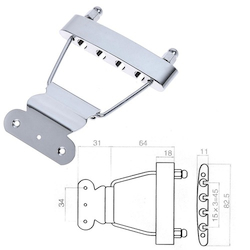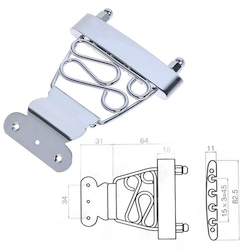We've got a couple of threads going about these ukes, but they contain a lot of scattered info. This thread is specifically for issues related to either upgraded or fixing these ukes. For example if you find a part that works or a string that works or have some tips for intonation, please share.
My plan is to use this tailpiece http://tinyurl.com/l4wj8ex in place of the six string tailpiece mine came with. I'd like to find a bridge to replace the six string bridge with the extra notches.
My plan is to use this tailpiece http://tinyurl.com/l4wj8ex in place of the six string tailpiece mine came with. I'd like to find a bridge to replace the six string bridge with the extra notches.




